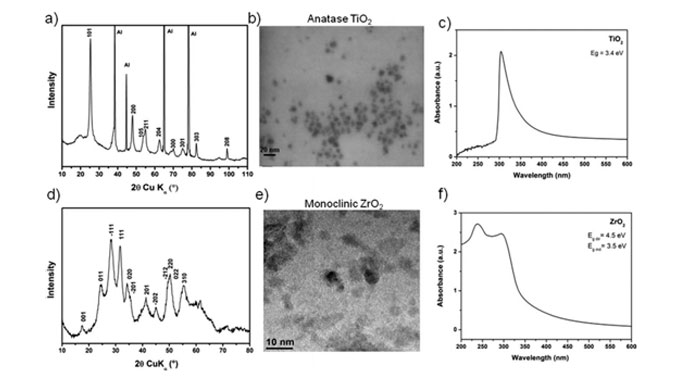
Writers: Tatiane M. Arantes, Renata L. Sala, Edson R. Leite, Elson Longo, Emerson R. Camargo
Keywords: degradation; nanocomposites; colloids; rubber; nanoparticles; nanowires; nanocrystals
Abstract: Much has been talking about the advantages of polymeric nanocomposites, but little is known about the influence of nanoparticles on the stability of these materials. In this sense, we studied the influence of both oxides of zirconium and titanium, known to have photocatalytic properties, as well as the influence of synthetic clay Laponite on the photodegradation of st yrene–buta-diene rubber (SBR). SBR nanocomposites were prepared by the colloidal route by mixing commercial polymer lattices and nanomet-ric anatase TiO2, monoclinic ZrO2 or exfoliated Laponite clays colloidal suspensions. To better understand the degradation mecha-nisms that occur in these nanocomposites, the efficiency of different photocatalysts under ultraviolet radiation was monitored by FT–IR and UV–v is spectroscopies and by differential scanning calorimetric. It was observed that TiO2and ZrO2 nanoparticles undoubtedly acted as catalysts during the photodegradation process with different efficiencies and rates. However, when compared to pure SBR samples, the polymer degradation mechanism was unaffected. Unlike studies with nanocomposites montmorillonite, exfoli-ated laponite clay effectively acts as a photostabilizer of polymer UV photodegradation.
DOI: 10.1002/app.38281




